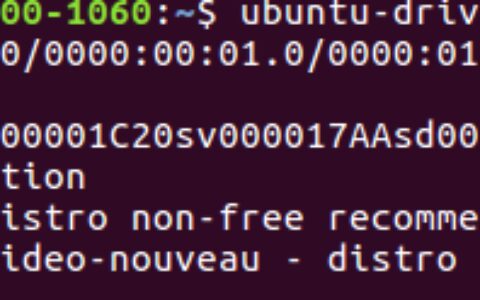#!/usr/bin/env python
import tensorflow as tf
from tensorflow.examples.tutorials.mnist import input_data
# In[2]:
mnist = input_data.read_data_sets('MNIST_data', one_hot=True)
# 每个批次的大小
batch_size = 100
# 计算一共有多少个批次
n_batch = mnist.train.num_examples // batch_size
# 参数概要
def variable_summaries(var):
with tf.name_scope('summaries'):
mean = tf.reduce_mean(var)
tf.summary.scalar('mean', mean) # 平均值
with tf.name_scope('stddev'):
stddev = tf.sqrt(tf.reduce_mean(tf.square(var - mean)))
tf.summary.scalar('stddev', stddev) # 标准差
tf.summary.scalar('max', tf.reduce_max(var)) # 最大值
tf.summary.scalar('min', tf.reduce_min(var)) # 最小值
tf.summary.histogram('histogram', var) # 直方图
# 初始化权值
def weight_variable(shape, name):
initial = tf.truncated_normal(shape, stddev=0.1) # 生成一个截断的正态分布
return tf.Variable(initial, name=name)
# 初始化偏置
def bias_variable(shape, name):
initial = tf.constant(0.1, shape=shape)
return tf.Variable(initial, name=name)
# 卷积层
def conv2d(x, W):
# x input tensor of shape `[batch, in_height, in_width, in_channels]`
# W filter / kernel tensor of shape [filter_height, filter_width, in_channels, out_channels]
# `strides[0] = strides[3] = 1`. strides[1]代表x方向的步长,strides[2]代表y方向的步长
# padding: A `string` from: `"SAME", "VALID"`
return tf.nn.conv2d(x, W, strides=[1, 1, 1, 1], padding='SAME')
# 池化层
def max_pool_2x2(x):
# ksize [1,x,y,1]
return tf.nn.max_pool(x, ksize=[1, 2, 2, 1], strides=[1, 2, 2, 1], padding='SAME')
# 命名空间
with tf.name_scope('input'):
# 定义两个placeholder
x = tf.placeholder(tf.float32, [None, 784], name='x-input')
y = tf.placeholder(tf.float32, [None, 10], name='y-input')
with tf.name_scope('x_image'):
# 改变x的格式转为4D的向量[batch, in_height, in_width, in_channels]`
x_image = tf.reshape(x, [-1, 28, 28, 1], name='x_image')
with tf.name_scope('Conv1'):
# 初始化第一个卷积层的权值和偏置
with tf.name_scope('W_conv1'):
W_conv1 = weight_variable([5, 5, 1, 32], name='W_conv1') # 5*5的采样窗口,32个卷积核从1个平面抽取特征
with tf.name_scope('b_conv1'):
b_conv1 = bias_variable([32], name='b_conv1') # 每一个卷积核一个偏置值
# 把x_image和权值向量进行卷积,再加上偏置值,然后应用于relu激活函数
with tf.name_scope('conv2d_1'):
conv2d_1 = conv2d(x_image, W_conv1) + b_conv1
with tf.name_scope('relu'):
h_conv1 = tf.nn.relu(conv2d_1)
with tf.name_scope('h_pool1'):
h_pool1 = max_pool_2x2(h_conv1) # 进行max-pooling
with tf.name_scope('Conv2'):
# 初始化第二个卷积层的权值和偏置
with tf.name_scope('W_conv2'):
W_conv2 = weight_variable([5, 5, 32, 64], name='W_conv2') # 5*5的采样窗口,64个卷积核从32个平面抽取特征
with tf.name_scope('b_conv2'):
b_conv2 = bias_variable([64], name='b_conv2') # 每一个卷积核一个偏置值
# 把h_pool1和权值向量进行卷积,再加上偏置值,然后应用于relu激活函数
with tf.name_scope('conv2d_2'):
conv2d_2 = conv2d(h_pool1, W_conv2) + b_conv2
with tf.name_scope('relu'):
h_conv2 = tf.nn.relu(conv2d_2)
with tf.name_scope('h_pool2'):
h_pool2 = max_pool_2x2(h_conv2) # 进行max-pooling
# 28*28的图片第一次卷积后还是28*28,第一次池化后变为14*14
# 第二次卷积后为14*14,第二次池化后变为了7*7
# 进过上面操作后得到64张7*7的平面
with tf.name_scope('fc1'):
# 初始化第一个全连接层的权值
with tf.name_scope('W_fc1'):
W_fc1 = weight_variable([7 * 7 * 64, 1024], name='W_fc1') # 上一场有7*7*64个神经元,全连接层有1024个神经元
with tf.name_scope('b_fc1'):
b_fc1 = bias_variable([1024], name='b_fc1') # 1024个节点
# 把池化层2的输出扁平化为1维
with tf.name_scope('h_pool2_flat'):
h_pool2_flat = tf.reshape(h_pool2, [-1, 7 * 7 * 64], name='h_pool2_flat')
# 求第一个全连接层的输出
with tf.name_scope('wx_plus_b1'):
wx_plus_b1 = tf.matmul(h_pool2_flat, W_fc1) + b_fc1
with tf.name_scope('relu'):
h_fc1 = tf.nn.relu(wx_plus_b1)
# keep_prob用来表示神经元的输出概率
with tf.name_scope('keep_prob'):
keep_prob = tf.placeholder(tf.float32, name='keep_prob')
with tf.name_scope('h_fc1_drop'):
h_fc1_drop = tf.nn.dropout(h_fc1, keep_prob, name='h_fc1_drop')
with tf.name_scope('fc2'):
# 初始化第二个全连接层
with tf.name_scope('W_fc2'):
W_fc2 = weight_variable([1024, 10], name='W_fc2')
with tf.name_scope('b_fc2'):
b_fc2 = bias_variable([10], name='b_fc2')
with tf.name_scope('wx_plus_b2'):
wx_plus_b2 = tf.matmul(h_fc1_drop, W_fc2) + b_fc2
with tf.name_scope('softmax'):
# 计算输出
prediction = tf.nn.softmax(wx_plus_b2)
# 交叉熵代价函数
with tf.name_scope('cross_entropy'):
cross_entropy = tf.reduce_mean(tf.nn.softmax_cross_entropy_with_logits(labels=y, logits=prediction),
name='cross_entropy')
tf.summary.scalar('cross_entropy', cross_entropy)
# 使用AdamOptimizer进行优化
with tf.name_scope('train'):
train_step = tf.train.AdamOptimizer(1e-4).minimize(cross_entropy)
# 求准确率
with tf.name_scope('accuracy'):
with tf.name_scope('correct_prediction'):
# 结果存放在一个布尔列表中
correct_prediction = tf.equal(tf.argmax(prediction, 1), tf.argmax(y, 1)) # argmax返回一维张量中最大的值所在的位置
with tf.name_scope('accuracy'):
# 求准确率
accuracy = tf.reduce_mean(tf.cast(correct_prediction, tf.float32))
tf.summary.scalar('accuracy', accuracy)
# 合并所有的summary
merged = tf.summary.merge_all()
with tf.Session() as sess:
sess.run(tf.global_variables_initializer())
train_writer = tf.summary.FileWriter('logs/train', sess.graph)
test_writer = tf.summary.FileWriter('logs/test', sess.graph)
for i in range(1001):
# 训练模型
batch_xs, batch_ys = mnist.train.next_batch(batch_size)
sess.run(train_step, feed_dict={x: batch_xs, y: batch_ys, keep_prob: 0.5})
# 记录训练集计算的参数
summary = sess.run(merged, feed_dict={x: batch_xs, y: batch_ys, keep_prob: 1.0})
train_writer.add_summary(summary, i)
# 记录测试集计算的参数
batch_xs, batch_ys = mnist.test.next_batch(batch_size)
summary = sess.run(merged, feed_dict={x: batch_xs, y: batch_ys, keep_prob: 1.0})
test_writer.add_summary(summary, i)
if i % 100 == 0:
test_acc = sess.run(accuracy, feed_dict={x: mnist.test.images, y: mnist.test.labels, keep_prob: 1.0})
train_acc = sess.run(accuracy, feed_dict={x: mnist.train.images[:10000], y: mnist.train.labels[:10000],
keep_prob: 1.0})
print("Iter " + str(i) + ", Testing Accuracy= " + str(test_acc) + ", Training Accuracy= " + str(train_acc))
本站文章如无特殊说明,均为本站原创,如若转载,请注明出处:卷积+池化+卷积+池化+全连接 - Python技术站

 微信扫一扫
微信扫一扫  支付宝扫一扫
支付宝扫一扫 

![[机器学习入门] 李宏毅机器学习笔记-32 (Recurrent Neural Network part 1;循环神经网络 part 1)](https://pythonjishu.com/wp-content/uploads/2023/04/uNchKisWWYBS20230408-480x300.jpg)

